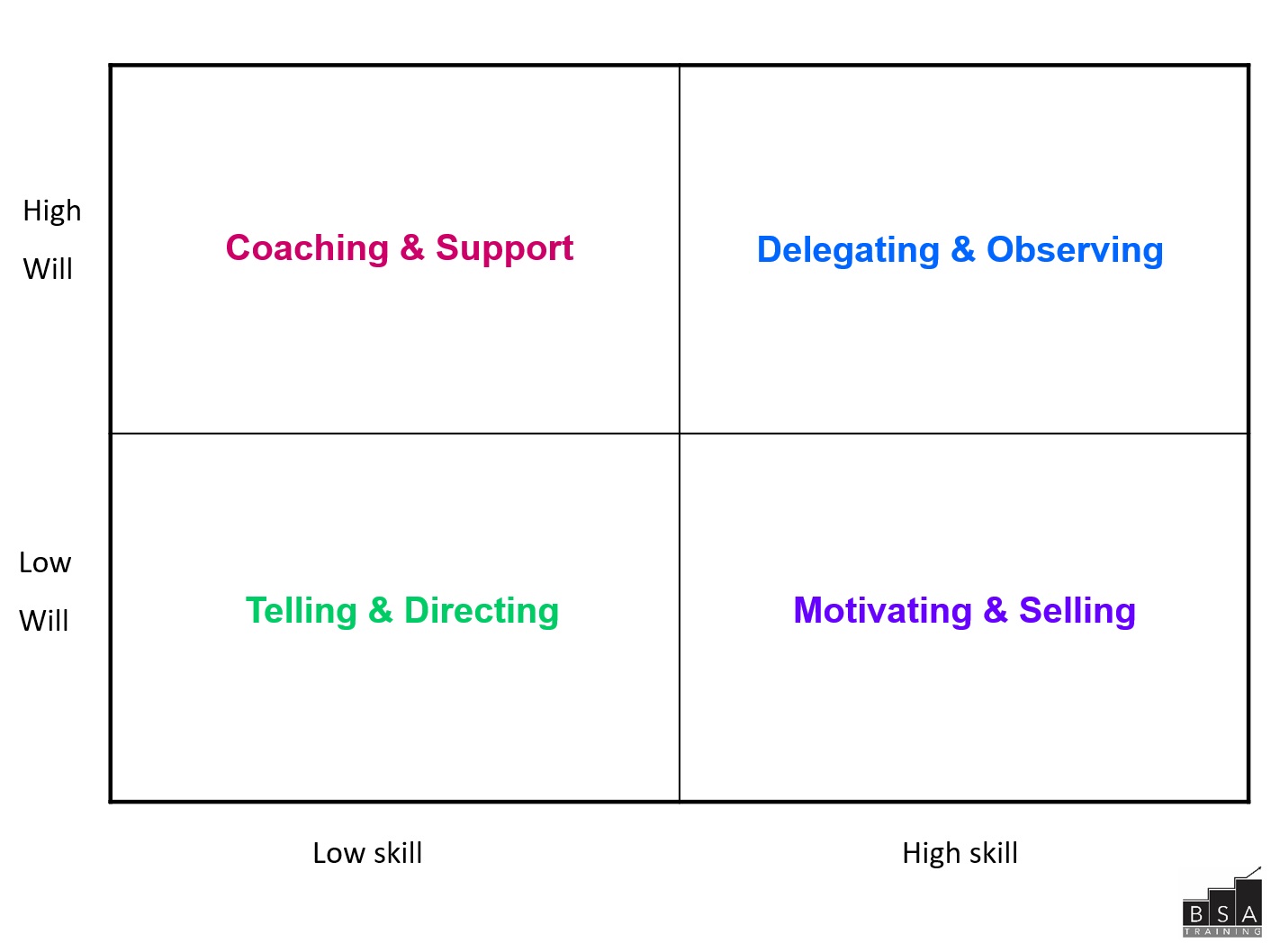It is said ..
In today’s world, having one particular management or leadership style is probably not the answer.
Leaders must be chameleons, adjusting their personal style to the individuals that they manage, in order to get the best out of each.
Be adaptive
The best managers adapt their behaviour to the needs of the people and situations for which they are responsible.
One way that being adaptive works is when handing out tasks. Managers should choose a management style that fits with their employees’ ability (skill) and willingness (will) to perform a task. This helps the employee perform it the best they can.
Think about giving instructions to a colleague. A new person joins your team. You’re asked to help them through the first few days. You sit them in front of a PC, show them a pile of invoices that need to be processed today, and head straight off to a meeting. The invoices don’t get processed and the new person is helpless and feels demotivated.
Now imagine going on holiday and handing over to an experienced colleague. You’ve listed all the tasks that need to be done, and a set of detailed instructions on how to carry out each one. If that person knows full well what to do the work will probably get done, but not the way you expected. You’ve made your colleague feel patronised.
But swap the situations and things get better. Leave detailed instructions and a checklist for the new person, and they’ll thank you for it. Give your colleague a quick chat and a few notes before you go on holiday, and everything will be fine.
The Skill/Will Matrix
The Skill/Will Matrix was introduced by Max Landsberg in his book, The Tao of Coaching .
Managers must first assess the employee’s level of skill in dealing with that situation, issue or task, plus their level of will.
- How competent / able is a person to do something? (their “skill”)
- How motivated / desirous are they to do something? (their “will”)
 Start by deciding the level of the employee’s skill and will, either high or low for each. Then you can plot the employee onto one of the four quadrants to determine the appropriate style of interaction to adopt.
Start by deciding the level of the employee’s skill and will, either high or low for each. Then you can plot the employee onto one of the four quadrants to determine the appropriate style of interaction to adopt.
Telling and Direct (when both skill and will are low)
When the employee has low will and low skill, there is a need to develop both and to closely supervise the employee to achieve this as a Manager you need to help them to build the will, develop the skill and then sustain the will. This can be achieved by:
- Identifying motivations so that you can tap into these
- Developing a vision of future performance to build motivation
- Structuring tasks for quick wins helping to develop confidence
- Developing their skills through training and the coach
- Sustaining the will through the provision of timely feedback and, where appropriate, praise.
Coaching and Support (when there is high will but low skill)
When guidance is required, the employee already has the motivation but lacks the necessary skills. To address this, as Manager you can:
- Invest time early on providing a clear conception of what they are going to achieve, and how they are going to achieve it
- Provide opportunities for the employees to observe someone with the appropriate skills and experience
- Set them a series of smaller tasks to build up their skills gradually
- Answer questions and explain
- Create a risk free environment to where they feel safe in making mistakes and can learn from
- Relax control as progress is shown.
Motivating and Selling (when there is high skill but low will)
As Manager you will:
- Have to first identify the reason for the low will. for example the task, management, style or personal factors
- Motivate wherever possible, linking in to what makes them tick
- Monitor performance and give frequent feedback.
Delegating and Observing (when both skill and will are high)
The role of a Manager for someone whose skill and will are both high is to:
- Provide freedom to do the job
- Set objectives, not methods of achieving those objectives
- Provide them with a sounding board and to develop their confidence
- Encourage the individual to take responsibility
- Involve them in decision making – use a “tell me what you think” approach
- Give more stretching tasks.
Putting it into practice
So how can how you use this to develop your team?
- Review who is in your team (your area of influence)
- Review each individual in the team and identify the person’s skill and will
- Plot them on the matrix identifying which of the 4 quadrants best describe them
- Meet with them to clarify and confirm with them your own perceptions of their skills / will and modify if necessary
- Discuss your intended approach and reasons with the person.
When giving instructions or delegating tasks, be adaptive. Vary your approach using the Skill/Will matrix to maximise the effectiveness of your ‘lounge’ – that’s the collective word for lizards!
BSA Training has developed a Leadership Programme which includes MANAGING SELF (Use of a profiling tool to identify behavioural preferences to help you understand yourself better and how your behaviour may affect others) and MANAGING PEOPLE & RELATIONSHIPS (Identify preferred Leadership style and when and how to adopt a range styles when working with different people and in different situations)
Find out more about management and leadership skills by joining us on Leadership & Management training programme with BSA Training!

Comments (0)